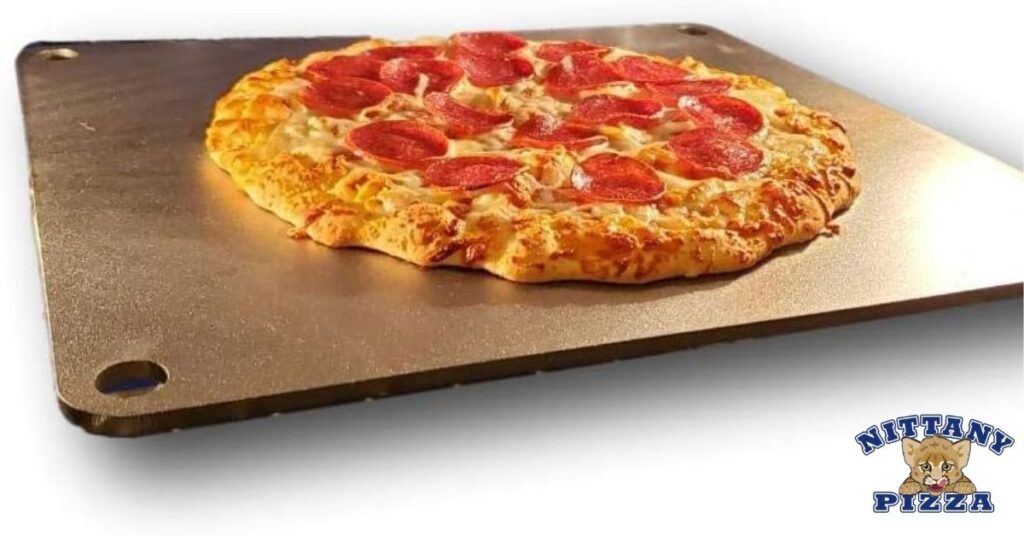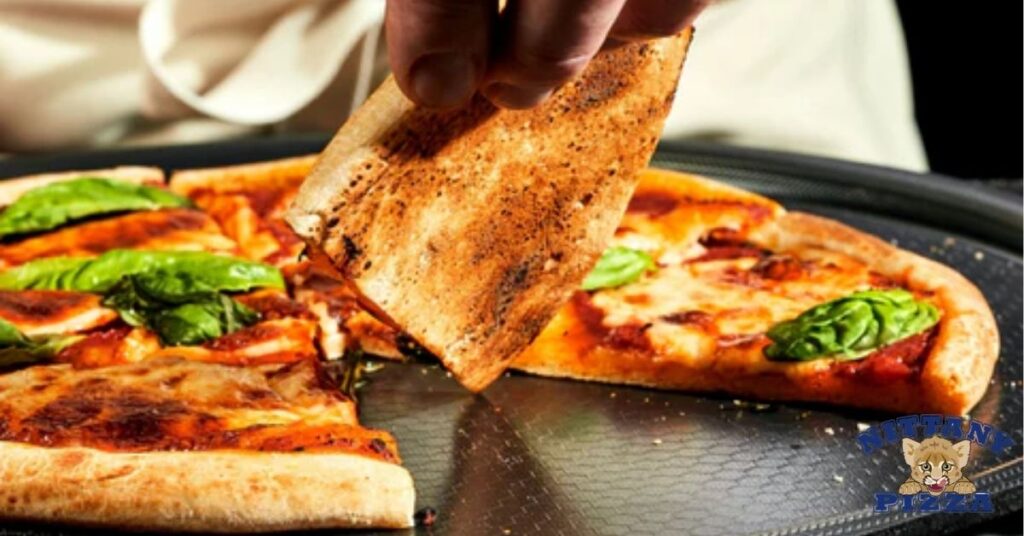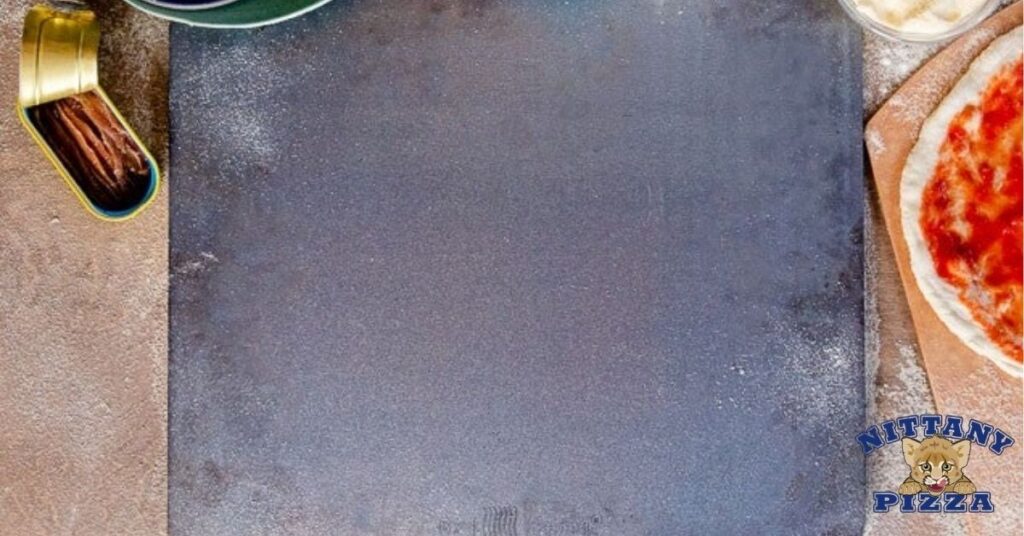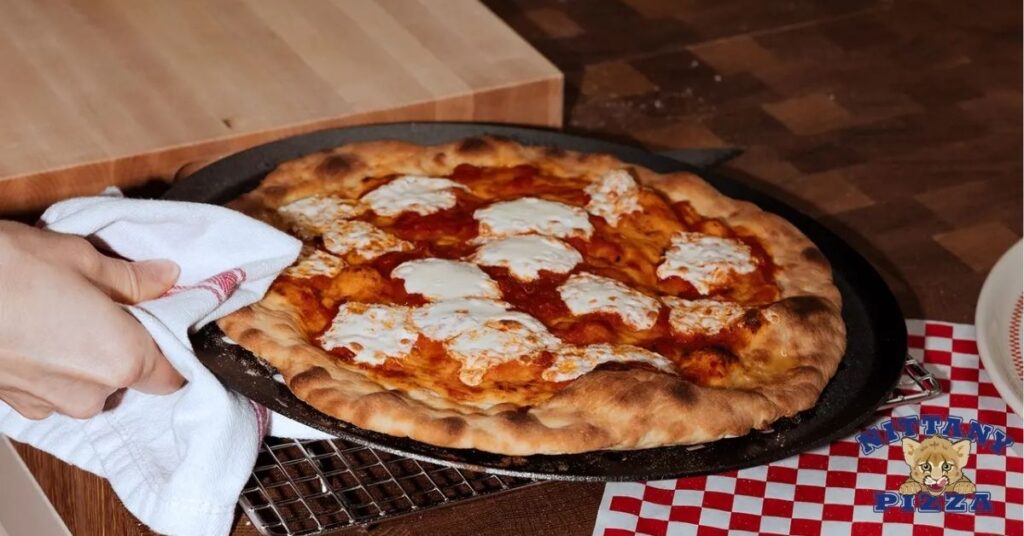If you’ve ever dreamed of crafting pizzeria-quality pizzas right in your own kitchen, a pizza steel is your secret weapon. This game-changing tool transforms your home oven into a pizza-making powerhouse, delivering that perfect crispy crust and authentic flavor you crave. It’s not just for pros—you can master it too with just a little know-how.
Using a pizza steel isn’t complicated, but it does require some simple techniques to unlock its full potential. Once you get the hang of it, you’ll wonder how you ever made pizza without it. Ready to elevate your homemade pizza game and impress everyone at the table? Let’s jump into how to use a pizza steel to create mouthwatering results every single time.
What Is A Pizza Steel?

A pizza steel is a flat, heavy steel cooking surface designed to replicate the conditions of a commercial pizza oven in your home kitchen. Its ability to absorb and retain heat makes it perfect for achieving a crispy, golden crust. Unlike a pizza stone, it handles higher temperatures without cracking or breaking.
You can use a pizza steel to bake pizzas, breads, and other baked goods requiring even heat distribution. The dense steel surface transfers heat quickly to the dough, resulting in rapid cooking and better texture. Many home cooks rely on it for consistent results in recipes that demand high heat.
Pizza steels typically come in rectangular or round shapes with thicknesses ranging from 0.25 to 0.5 inches. Thicker steels retain heat longer, while thinner ones heat up faster. Various sizes are available to fit standard home ovens.
Caring for your pizza steel involves seasoning it like a cast-iron pan to prevent rust. Proper maintenance helps it last for years and enhances its performance over time.
Benefits Of Using A Pizza Steel

Using a pizza steel transforms your home cooking experience by delivering professional-level cooking results. It provides unique advantages over traditional tools, making it a popular choice for pizza enthusiasts.
Improved Heat Retention
A pizza steel absorbs and retains heat more efficiently than alternatives like pizza stones. Its iron composition holds high temperatures longer, ensuring consistent heat levels during baking. Higher retention prevents temperature drops when placing cold dough on the surface. This stability is essential for cooking multiple pizzas or other baked goods consecutively without reheating.
Perfectly Crispy Crust
Steel’s superior conductivity promotes rapid and even cooking. Heat transfers to the dough faster, producing an evenly browned, crispy crust every time. Unlike other surfaces, pizza steel eliminates soggy bases by ensuring sufficient underside baking. This enhances both texture and flavor for an authentic pizza experience.
Preparing Your Pizza Steel

Proper preparation of your pizza steel ensures the best results for your homemade pizzas. Taking care of cleaning, seasoning, and preheating creates an optimal cooking surface for high-quality outcomes.
Cleaning And Seasoning
Begin by cleaning your steel with warm water and mild soap before its first use. Avoid abrasive scrubbers to prevent damaging the surface. If residue persists, gently use a non-scratch sponge.
After drying the steel completely, apply a thin coat of neutral oil like canola or flaxseed. Spread the oil evenly using a paper towel to cover all areas. Place the steel in an oven set to 400°F for one hour if seasoning for the first time. Regular seasoning prevents rust and improves heat performance. Repeat this process occasionally or when the steel appears dull.
Preheating Tips
Place the steel on the top rack or middle rack of your oven, where heat distribution is most effective. Set your oven to its highest temperature—550°F for many models—around 45 minutes before cooking. This duration allows the steel to absorb sufficient heat, ensuring a crispy crust.
Once preheated, proceed quickly to avoid heat loss when opening the oven door. Use an infrared thermometer to verify that the steel’s surface reaches optimal cooking temperatures above 500°F. If using a broiler, you can preheat for an extra five minutes to maximize browning efficiency.
How To Use Pizza Steel For Cooking
A pizza steel ensures your pizza cooks evenly while achieving a crispy, golden crust. Follow these steps to maximize its potential for perfect results every time.
Placing The Steel In Your Oven
Position the pizza steel on the middle or top rack of your oven. Place it where heat circulation is optimal, prioritizing even cooking. Avoid putting it on the bottom rack since that may lead to unevenly baked crusts. Preheat your oven to its highest temperature, ensuring the steel absorbs enough heat for at least 45 minutes.
Transferring Your Pizza To The Steel
Use a pizza peel dusted with flour or cornmeal to prevent sticking when transferring the dough. Slide the uncooked pizza onto the steel in a single motion. Avoid hesitation during the transfer, as the toppings may shift or the dough may stick, leading to uneven placement on the steel.
Cooking And Monitoring
Keep the oven closed while the pizza cooks to retain maximum heat. Check the pizza after 5-7 minutes without opening the oven too frequently. Remove the pizza once the crust appears golden and the toppings bubble. Repeat heating steps for subsequent pizzas to maintain consistent steel temperature.
Maintenance And Storage Tips

Maintaining your pizza steel properly ensures its longevity and consistent performance. Regular cleaning and correct storage are essential to keep it in excellent condition.
Cleaning After Use
Clean the pizza steel after each use to prevent buildup. Allow it to cool completely before handling it, as handling hot steel can cause burns. Use warm water and a non-abrasive scrubber to remove food residue. Mild soap can be added if necessary, but avoid heavy detergents or abrasive cleaners, which can damage the steel’s surface. Avoid soaking the steel in water to minimize the risk of rust. For stubborn bits, scrape them gently with a plastic or metal spatula. Dry the steel thoroughly with a clean cloth or let it air dry fully to prevent moisture from causing rust.
Proper Storage Guidelines
Store your pizza steel in a dry location to protect it from humidity. A kitchen cabinet or drawer works well, provided the area is free from moisture. If you’re worried about rust, consider applying a very thin coat of neutral oil before storage. This protective layer helps repel moisture and maintain the seasoning. Place it flat or upright, but ensure it’s secured to avoid accidental falls, as the steel’s weight can cause damage. Storing the steel with care preserves its structure and surface, ensuring optimal performance for years.
Common Mistakes To Avoid
Understanding common pitfalls when using a pizza steel ensures better results and preserves its functionality. Proper technique can help you avoid errors that negatively impact your pizza or damage the steel.
Overheating The Steel
Overheating the pizza steel can lead to scorched crusts and unevenly cooked pizzas. The steel is designed to absorb and retain high heat, but excessive heating beyond optimal levels, such as above 550°F, can create overly dark or burnt bottoms. Monitor the steel temperature using an infrared thermometer to maintain control and adjust accordingly. Placing the steel too close to the oven’s broiler may also lead to overheating, causing damage to the steel’s seasoning layer. Always position the steel on the middle rack for consistent and manageable heat.
Skipping Preheating
Skipping the preheating step reduces the steel’s ability to deliver a crispy crust as it won’t reach the required heat for proper cooking. Cold or insufficiently heated steel causes the pizza to bake unevenly, leading to doughy centers or soggy bases. Allocate at least 45 minutes for preheating at your oven’s highest temperature before cooking. Start checking the temperature with an infrared thermometer to confirm it exceeds 500°F. If preheating feels time-consuming, remember it’s key to replicating the performance of a professional pizza oven.
Conclusion
Mastering the use of a pizza steel can completely transform your homemade pizza game. With its ability to deliver professional-quality results, this tool is a must-have for any pizza enthusiast. From achieving that perfect crispy crust to ensuring even cooking, a pizza steel brings authenticity and flavor right to your kitchen.
By following proper preparation, cooking techniques, and maintenance tips, you’ll enjoy consistently excellent results for years to come. Whether you’re a beginner or a seasoned cook, a pizza steel is your key to creating restaurant-worthy pizzas and baked goods at home.
Related Posts:
- Can Pizza Cause Gas? Here’s Why It Happens and How to Prevent It
- Best Containers for Pizza Dough: Keep It Fresh, Flavorful, and Perfectly Risenn“
- How Many Pizza Places Are in NYC? Explore the 1,600+ Pizzerias Across the Five Boroughs
- How to Clean Pizza Steel: Easy Tips to Keep It Rust-Free and Cooking Perfect Pizzas
- How to Use Pizza Steel Like a Pro: Get Crispy Crusts Every Time at Home
- How to Make Authentic Neapolitan Margherita Pizza at Home: Tips, Tools, and Recipe You Need
- Authentic New Haven Apizza Recipe: Make Connecticut’s Iconic Pizza at Home
- Ultimate Pastrami Pizza Recipe: A Bold Twist on Your Favorite Comfort Food
- Pizza Alla Diavola: Spice Up Your Dinner with This Fiery Italian Classic
- Pizza with Turkey Pepperoni: A Healthier, Delicious Twist for Your Next Dinner Night
- How to Make Perfect Rye Pizza Dough for a Nutty, Flavorful Crust
- Why Does Pizza Make Me Thirsty? The Surprising Truth Behind Your Post-Pizza Cravings
- Why Is Pizza So Expensive? Here’s the Truth Behind Rising Pizza Prices in the US
- Step-by-Step Guide to Building a Wood-Fired Micro Oven for Perfect Outdoor Cooking
